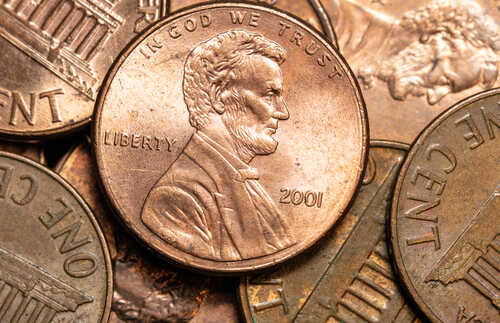
In a bold move to cut government waste, President Trump orders an end to penny production that costs taxpayers nearly four times its value.
Key Takeaways
- The U.S. Treasury is halting penny production after the cost to manufacture each penny rose to 3.69 cents, nearly four times its face value
- President Trump directed the Treasury Secretary to end penny production, calling the current process “so wasteful”
- The decision will save taxpayers approximately $56 million annually in material costs alone
- The final batch of penny blanks has been ordered, with the last new pennies entering circulation early next year
- Businesses will eventually need to round cash transactions to the nearest 5 cents as pennies gradually phase out
Trump Takes Action on Wasteful Government Spending
President Trump has taken decisive action to eliminate wasteful government spending by ordering the U.S. Treasury Department to halt the production of pennies. This significant shift in federal monetary policy addresses the escalating manufacturing expenses that have plagued penny production for years. The cost to produce a single penny has skyrocketed to 3.69 cents, making it financially unsound to continue minting a coin that costs nearly four times its face value. The Treasury has confirmed that it has placed its final order for penny blanks this month.
“For far too long the United States has minted pennies which literally cost us more than 2 cents. This is so wasteful! I have instructed my Secretary of the US Treasury to stop producing new pennies,” Said President Donald Trump, President of the United States.
Rising Production Costs Defy Common Sense
The financial burden of penny production has been mounting for years, with the cost increasing by an alarming 20 percent in fiscal year 2024 alone. For the past 19 consecutive years, producing both pennies and nickels has exceeded their face value, creating an unsustainable drain on resources. The composition of pennies – 97.5 percent zinc with a 2.5 percent copper plating – no longer presents a viable financial option due to sharp increases in material costs. Before the recent spike, pennies cost about 1.3 cents to produce, which was still more than their value.
“No private business would produce something at a 4x loss. It’s time to stop wasting Americans’ hard-earned tax dollars making overpriced pennies,” Said Sen. Mike Lee.
The penny’s production volume has been decreasing steadily over the past decade, dropping from over 9.36 billion in 2015 to just over 3.22 billion last year. Despite this reduction, more than half of U.S. coin production was devoted to pennies as recently as 2021. With approximately 114 billion pennies currently in circulation, Americans will still have access to the coin for everyday transactions even after production ceases.
Significant Savings for American Taxpayers
The decision to halt penny production is expected to save American taxpayers approximately $56 million annually in material costs alone. Additional savings are anticipated from repurposing facilities currently dedicated to penny production. Lawmakers from both political parties have supported the “Make Sense Not Cents Act,” which authorizes the cessation of penny production. The bipartisan support for this measure underscores the common-sense approach to eliminating wasteful government spending.
“Minting pennies costs the American taxpayer millions every year – nearly four times more than the pennies are worth,” Said Sen. Mike Lee (R-Utah).
Historical Change with Practical Implementation
The penny has been a cornerstone of American currency since it was first produced by the U.S. Mint in 1792. While this decision marks a significant change in our monetary system, the transition will be gradual. The U.S. Mint will continue producing pennies until the current inventory of blanks is exhausted, with the final new pennies expected to enter circulation early next year. Businesses will eventually need to adopt rounding practices for cash transactions to the nearest 5 cents, similar to other countries like Canada that have already discontinued similar low-value coins.
The Federal Reserve has recommended a gradual shift away from pennies to avoid a rush to redeem them, ensuring a smooth transition for consumers and businesses alike. While the penny is being phased out, nickels – which cost 13.78 cents each to produce in fiscal year 2024 – will continue to be minted despite also costing more than their face value. This calculated approach to reforming our currency system demonstrates President Trump’s commitment to eliminating government waste while minimizing disruption to everyday Americans.
























